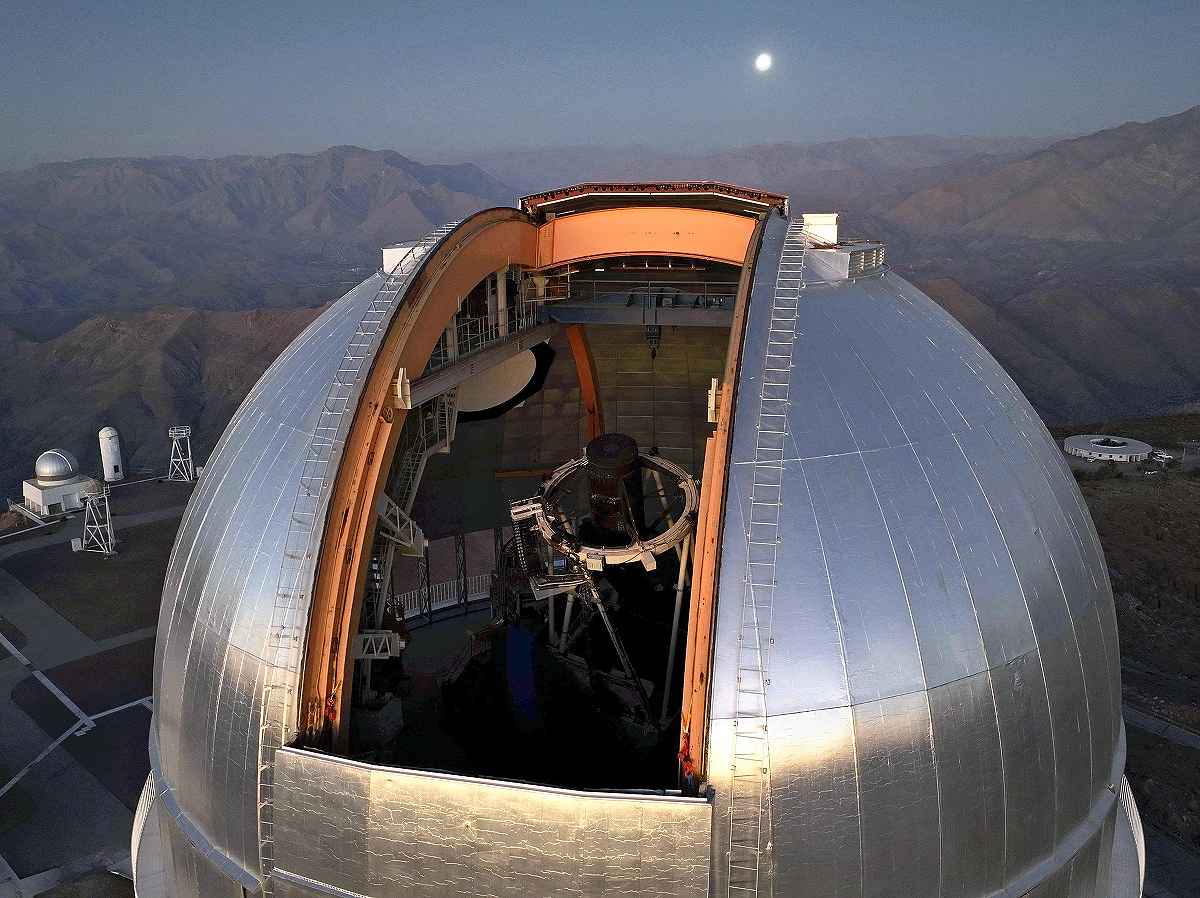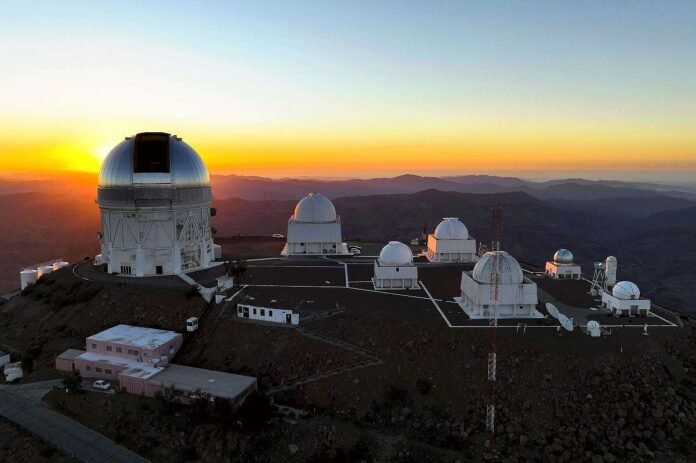The Cerro Tololo Observatory, located on Tololo Hill near La Serena, Coquimbo region, Chile, on January 24
15:56 JST, March 1, 2024
LA SERENA, Chile (AFP-Jiji) — Surrounded by the desert mountains and clear blue skies of northern Chile, astronomers at the Vera C. Rubin Observatory hope to revolutionize the study of the universe by creating the world’s largest digital camera ever on a telescope.
The advanced device is the size of a small car and weighs 2.8 tons and will reveal a view of the cosmos like never before, officials of the US-funded project told AFP.
Starting in early 2025, when the $800 million camera will take its first photos, the machine will cross the sky every three days, allowing scientists to reach new heights in their galactic analyses.
Researchers will be able to go from “studying one star and knowing everything about that one star in depth, to studying thousands of stars at the same time,” said Bruno Dias, president of the Chilean Society of Astronomy (SOCHIAS).
According to Stuartt Corder, deputy director of NOIRLAb, the US research center that manages the observatory, located 2,500 meters above Mount Cerro Pachon, 560 kilometers north of Santiago, the new facility will herald “a paradigm shift in astronomy.”
The project consolidates Chile’s dominant position in astronomical observation, as the South American country is home to a third of the most powerful telescopes in the world and boasts some of the clearest skies in the world, according to SOCHIAS.
The Rubin Observatory camera’s first task will be to complete a 10-year survey of the sky called the Legacy Survey of Space and Time (LSST), which researchers hope will reveal information about 20 million galaxies, 17 billion stars and six million space objects. .
The research will give scientists an up-to-date inventory of images of the solar system, allow them to map our own galaxy, the Milky Way, and delve deeper into the study of energy and dark matter.
300 TVs for one image
The new camera can take 3,200 megapixel photos, resulting in images so large that it would require more than 300 average-sized high-definition televisions lined up side by side to view just one.
Built in California, the machine will have triple the capacity of the world’s current most powerful camera, Japan’s 870-megapixel Hyper Suprime-Cam, and six times the capacity of NOIRLab’s most powerful camera.
The laboratory’s existing top camera, on Chile’s Cerro Tololo mountain, has only 520 megapixels, said Jacques Sebag, chief of construction for the Rubin telescope.
Chilean telescopes have come a long way since the 40-centimeter Cerro Tololo telescope, at the country’s first international observatory, was installed in the 1960s.
“That telescope arrived here on the back of a mule because there was no road,” said Stephen Heathcote, director of the Cerro Tololo Inter-American Observatory, just 12 miles from Cerro Pachon.
Astronomy capital of the world
The Vera C. Rubin Observatory, named in honor of the American astronomer who discovered dark matter, will join several other space observation research centers in northern Chile.
The natural conditions of the region’s desert landscape – nestled between the Pacific Ocean and the Andes Mountains – provide the clearest air in the world, thanks to a dry climate with little cloud cover.
The area is home to telescopes from more than 30 countries, including some of the most powerful astronomical instruments in the world, such as the ALMA Observatory radio telescope and the under-construction Extremely Large Telescope, which by 2027 will be able to view never-before-seen parts of the universe to view.
Many of humanity’s most important astronomical discoveries have been made at the Cerro Tololo Observatory, such as the 2011 Nobel Prize-winning revelation that the expansion of the universe is accelerating, a phenomenon known as cosmic acceleration.
Although other influential observatories have opened around the world, including in the United States, Australia, China and Spain, “Chile is unbeatable” in the world of astronomy, said Dias, the president of SOCHIAS.

The Cerro Tololo Observatory, located on Tololo Hill near La Serena, Coquimbo region, Chile, on January 24



